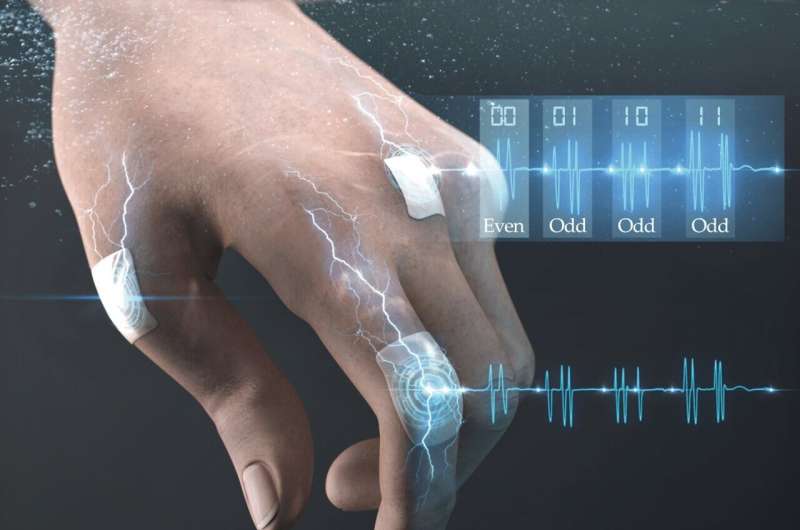DGIST research teams have developed a self-powered sensor that uses motion and pressure to generate electricity and light simultaneously. This battery-free technology is expected to be used in various real-life applications, such as disaster rescue, sports, and wearable devices.
Triboelectric nanogenerators (TENG) and mechanoluminescence (ML) have attracted attention as green energy technologies that can generate electricity and light, respectively, without external power. However, researchers in previous studies mainly focused on the two technologies separately or simply combined them. Moreover, the power output stability of TENG and the insufficient luminous duration of ML materials have been major limitations for practical applications.
The research team has developed a system that generates electricity and light simultaneously using motion and pressure. They added light-emitting zinc sulfide-copper (ZnS:Cu) particles to a rubber-like material (polydimethylsiloxane [PDMS]) and designed a single electrode structure based on silver nanowires to obtain high efficiency. The developed device does not degrade in performance even after being repeatedly pressed more than 5,000 times, and it stably generates voltages of up to 60 V and a current of 395 nA.
The findings are published in the journal Advanced Sustainable Systems.
This research goes beyond the development of a technology. It is at a level that is ready for real-world applications. In particular, the ability to send SOS signals using light can greatly help in emergencies such as disaster rescue and deep-sea operations. It is stable in underwater and dark environments, effectively overcoming the limitations of existing technologies.
This technology can be utilized for various applications, such as wearable safety devices, sports activity monitoring, and rescue signaling devices. Examples include helmets that detect impact and immediately send a signal; wrist guards that detect movement; and devices that send rescue signals, even underwater. Since it does not require a battery, it is an environmentally friendly and sustainable technology.
“This research is of great significance because this technology can generate light and electrical energy simultaneously without batteries, using only motion, and it can be used immediately,” said Prof. Kim Hoe Joon from DGIST’s Department of Robotics and Mechatronics Engineering.

“In particular, this technology is expected to make our lives safer and more sustainable since it can send real-time signals in emergencies and reduce environmental impact through energy harvesting.”
Sugato Hajra, a post-doctoral researcher at DGIST’s Department of Robotics and Mechatronics Engineering, and Swati Panda, a Ph.D. student, are co-first authors of the study, and Prof. Kim Hoe Joon and Dr. Jeong Soon Moon are corresponding authors. The research teams were led by Prof. Kim Hoe Joon (Department of Robotics and Mechatronics), Dr. Jeong Soon Moon (Division of Energy and Environmental Technology), and Prof. Mishra (University of Southern Denmark).

